Many of you will probably never have heard of Russia’s largest island Sakhalin. Yet it is an exciting place not only in terms of its nature, but also in terms of its history, which is also very important for Russia’s gas and oil supply. Japan and Russia are still arguing about who owns the island. As you can see, there are plenty of reasons to take a closer look at Sakhalin Island.
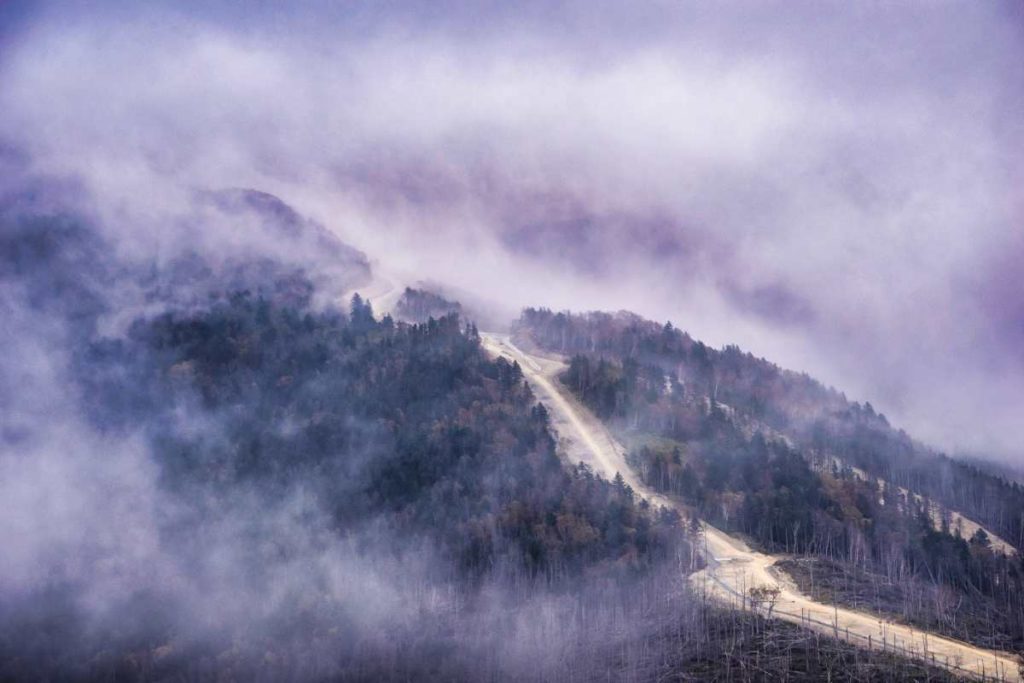
This is Sakhalin island
Sakhalin is an island in the southern Sea of Okhotsk, a marginal sea of the Pacific Ocean. It lies north of Japan and east of the Russian mainland, and at one point only 10 km from the Siberian east coast. The distance to Japan’s Hokkaido in the south is only about 45 km. With an area of 72,000 km², Sakhalin is the largest Russian island and about the size of Bavaria or Ireland. With its gas and oil deposits, the island is of outstanding strategic importance for Russia. The deposits are transported to the mainland via a pipeline. Although Sakhalin is still quite untouched in many places, the exploitation of the resources has left clear traces here. Until now, the island has been a shadowy tourist destination, but this could soon change thanks to new infrastructure projects.
The history of Sakhalin
Sakhalin has been inhabited since the Stone Age. Originally the Oroks, Ainu and Nivchen lived here, all of whom also settled and still live on the island of Hokkaido. In the Middle Ages Sakhalin was subjugated by the Mongols, later the island was controlled by the Chinese Empire. In the course of Russia’s eastward expansion in pre-modern times, Russian explorers soon reached the island, but Japan also began to take an interest in the island. Russian soldiers or Cossack expeditions came across the island almost automatically, as it is located exactly opposite the mouth of the Amur River into the sea.
Not of particular interest for a long time
Despite its size, Sakhalin remained of minor interest for a long time, with only a few Japanese fishermen settling on the southern coast during the summer months and then wintering on Hokkaido. Formally, however, China retained sovereignty over the island. In the 19th century, as Russia and Japan increasingly emerged from the shadow of a weakening China, a conflict between the two great powers began to emerge. Japan occupied the island in 1806, but gave it up only 15 years later. Sakhalin seemed to sink back into insignificance before large gold deposits were discovered on the Amur River and Russia built several settlements on the island in the 1850s.

Joint administration and transfer
Meanwhile, China was so weakened by the appearance of the Europeans and the Japanese expedition that Russia was able to strike and bring the island and parts of Manchuria completely under its control. An agreement with Japan then ensured that Sakhalin was administered by both powers. In 1875, an agreement was reached that gave Russia control of the island in exchange for the Kuril archipelago east of Sakhalin. However, Japanese already living on Sakhalin were allowed to continue living here and were even given their own consulate. Russia subsequently maintained a penal colony here before the island was captured by Japan during the Russo-Japanese War (1904–1905).
Japanese control
Russia lost the war, which led, among other things, to the 1905 revolution. In a peace treaty, Japan was granted the south of Sakhalin. In the chaos of the Russian Civil War, which followed the October Revolution at the end of World War I, Japanese troops captured the entire island and were to control the area until the end of World War II. A few days before the end of the war, the Soviet Union declared war on Japan and, with heavy losses, captured the entire island, which has been under Soviet and Russian control, respectively, ever since. The Japanese population was forcibly resettled in the course of the Soviet Union’s capture.
Sakhalin – an object of dispute between Japan and Russia
It was not until 1951 that a treaty was negotiated between the Soviet Union and Japan, which dealt with Sakhalin and the Kuril Islands. However, this treaty was not clearly formulated and was not signed by the Soviet Union. The Soviet Union – just like Japan – considered the island as its territory and even shot down a Korean airplane in the airspace of Sakhalin in 1983, killing almost 300 people. Until 1991 Sakhalin was treated like a fortress, civilians were strictly forbidden to enter the island.
Since the fall of the Soviet Union, the situation has eased somewhat, people are trading and trying not to let a possible conflict over the island boil up, but Japan has never given up its claims at least to the southern part of the island with reference to the unsigned agreement. Partly because of the conflict over Sakhalin and the southern Kuril Islands, there is still no peace treaty between Russia and Japan today. China, the EU, and the U.S. currently tend to support Japanese claims to the island.

Sights on Sakhalin island
Sakhalin is not only an object of dispute between Japan and Russia, but also a beautiful island with many sights. We would like to introduce the most important ones to you here.
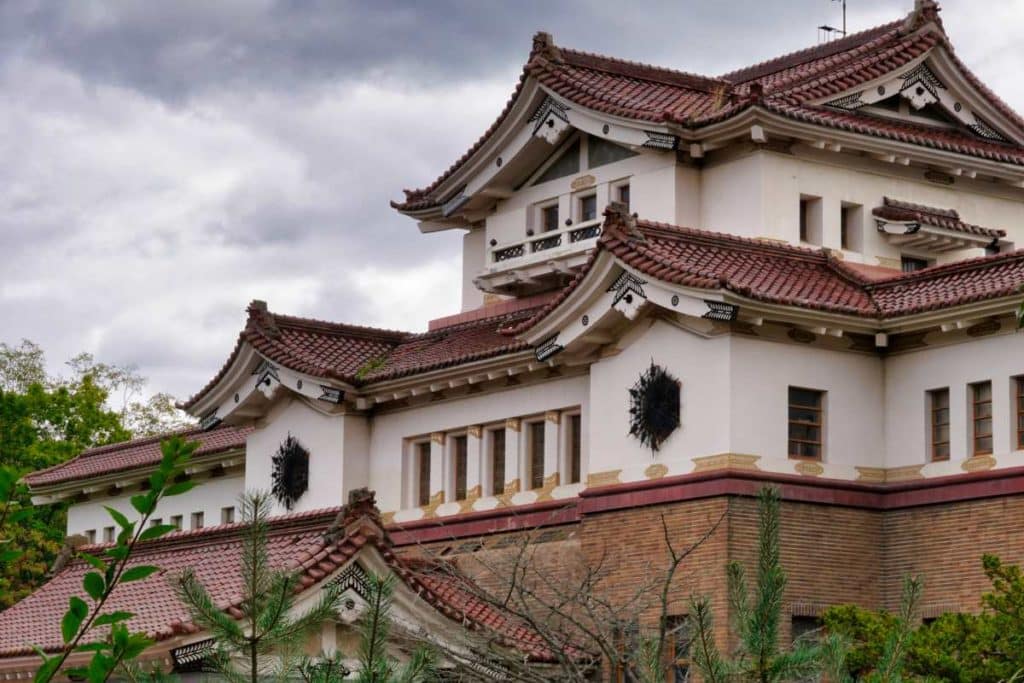
Yuzhno-Sakhalinsk
With 180,000 inhabitants, Yuzhno-Sakhalinsk is by far the largest settlement on the island. A Russian village founded in 1882 and named Vladimirovka was developed by the Japanese under the name Toyohara into the administrative seat of Karafuto Prefecture. Today, the only thing that remains from the Japanese period is the regional museum, which used to be the seat of the Japanese administration. If you visit Sakhalin, you will most likely stay here in the south of the island. In addition to the regional museum, there are several other attractions in the city, including a large zoo, the Yuri Gagarin Park and a railroad museum, where you can also see several Japanese trains.
From Yuzhno-Sakhalinsk you can take the cable car to the ski resort Gorniy Vozduch (“Mountain Air”). The modern resort offers you all amenities, in addition, nationwide competitions are held here again and again.
Neftegorsk Memorial
In 1995, an earthquake of magnitude 7.1 occurred on the island. The town of Neftegorsk, inhabited by about 3,500 oil workers and their families, was leveled to the ground, and nearly two-thirds of the residents died. It was decided not to rebuild the small town and resettled the survivors. Today you can walk through the destroyed ghost town and see the cemetery with the graves of the victims. There is also a small memorial here. In Yuzhno-Sakhalinsk, an impressive monument commemorates the tragic event.
Lake Tunajcha
45 kilometers southeast lies this popular lake, the largest on the island. It is a popular breeding ground for rare birds, which is why it is protected. The lake is especially popular with birdwatchers, but it is not easy to get here.
Vayda Mountains
Approximately in the middle of the island, i.e. where the Japanese-Russian border used to be, stretches the Vayda Massif. This once heavily forested part of the island has unfortunately lost many trees due to the logging industry, but still has its charm. This is mainly due to the many caves that you can explore here, if you dare. But you should look for an experienced guide in Yuzhno-Sakhalinsk, because the whole thing is not without danger. If you just want to hike through the mountain landscape with its lakes, you can also take the train from Yuzhno-Sakhalinsk to Smirnich. There, it is best to ask a local to drive you to Izvestkoviy, from where you can start your hike.
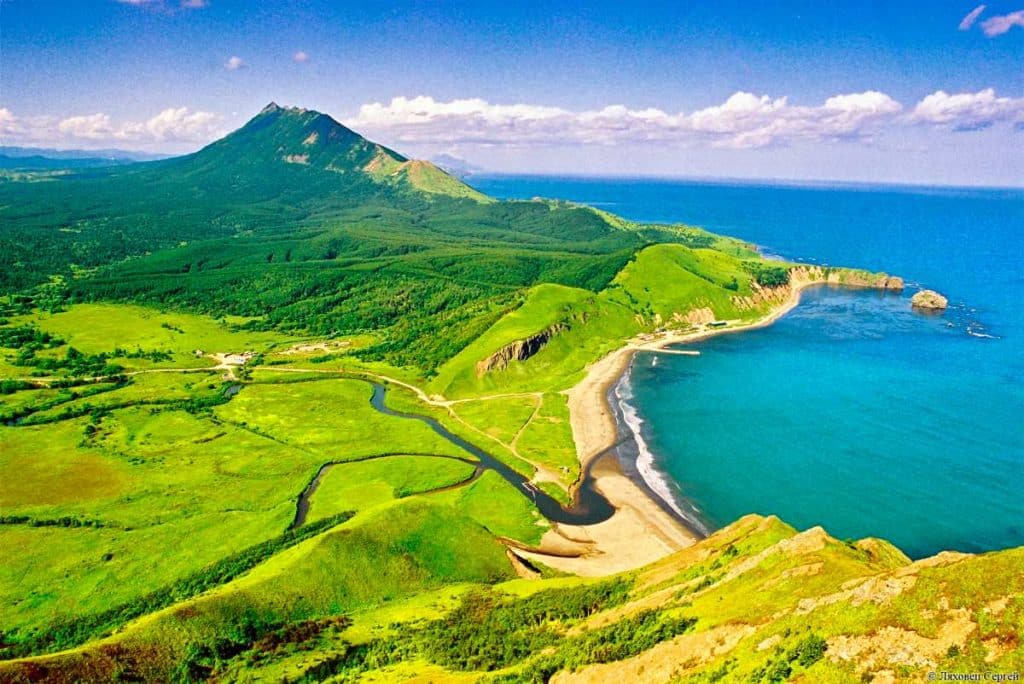
Zhdanko Mountains
Perhaps the most popular tourist destination on the island is the Zhdanko massif north of the village of Tikhaya. The 13 km long ridge is made of volcanic rock and offers spectacular views of the island and its sandy coastline. The contrast of volcanic rock and the lush green of the trees provides wonderful photo opportunities. The best thing to do here is to look for a guide in Yuzhno-Sakhalinsk. You can then hire one and explore the massif in a three-day tour including camping.
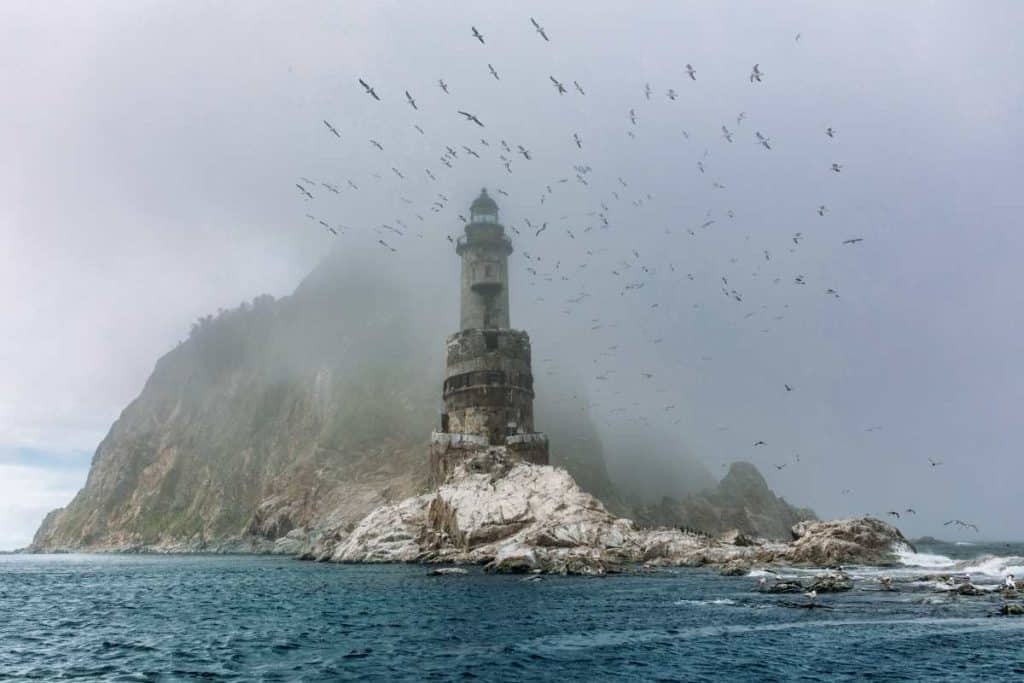
Aniva lighthouse
In the south of the island is the long Aniva Bay with the small town of the same name. Aniva lives mainly from fishing, but is known for its lighthouse all over the island. The Aniva lighthouse on a small rock off Sakhalin was built by the Japanese in 1939 and was one of the most modern in the empire at the time. In the 1990s, it was equipped with a mini-reactor, which has gone out of power. And so the lighthouse has been empty for several years and has become one of the most popular tourist destinations and one of the landmarks of the island, although it is considered one of the most difficult to access lighthouses in the world.
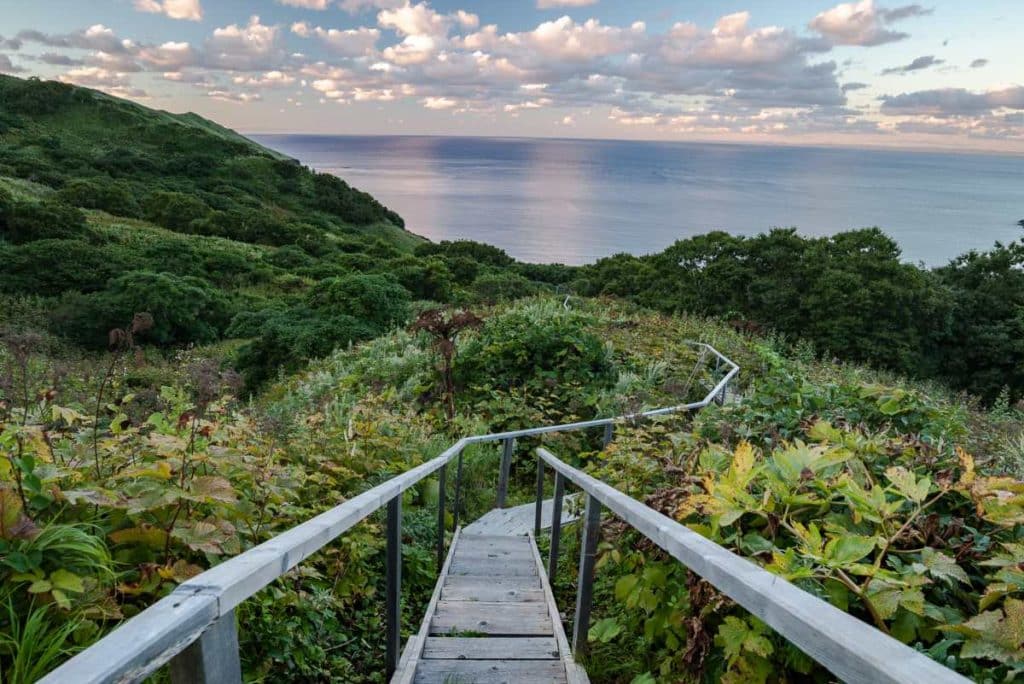
Moneron
Moneron is a 30km² island west of Sakhalin. With its cliffs and over 150 species of seabirds, Moneron is a natural paradise, protected by the government in 2007. Unfortunately, you need a special permit to enter Moneron. This is not because of the nature conservation requirements, but because it is a strategically sensitive area for Russia.
Tyuleni
Moneron is home to numerous sea lions. This is even more true for Tyuleni, which is often simply called Seal Island in English. Tyuleni is located south of a small headland on the eastern side of Sakhalin. For a long time Tyuleni was popular with fur hunters, at one time even a hotel was maintained here. In the meantime, interest in seal fur has fortunately waned. A special permit is also required for Tyuleni, although Russian cruise ships sometimes stop here.
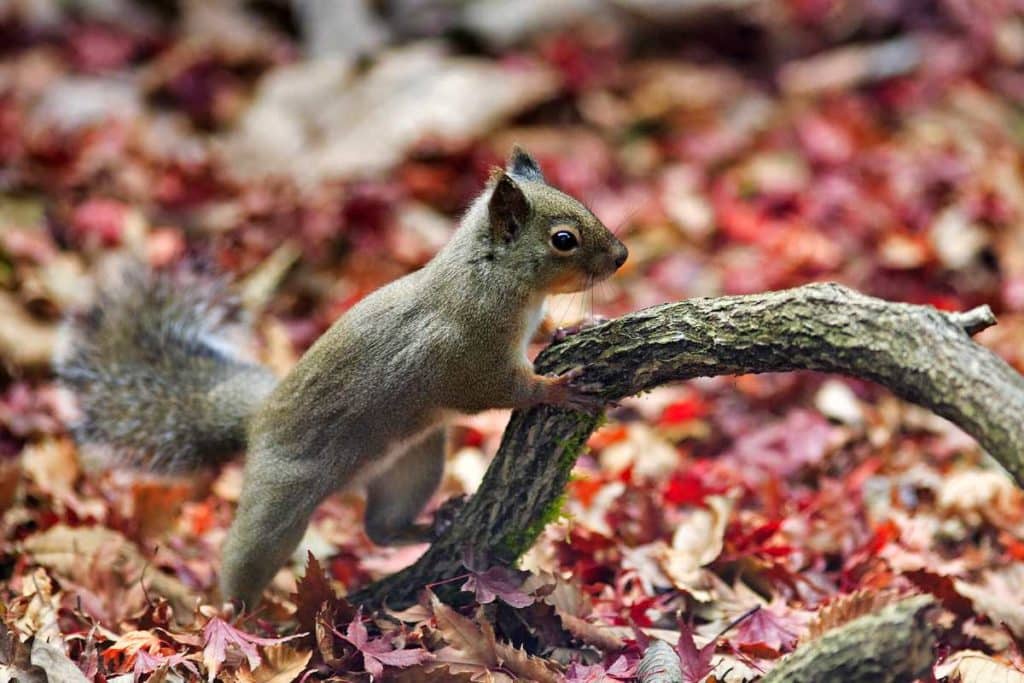
How to get to Sakhalin?
In the future, a tunnel will connect Sakhalin with Hokkaido. Until then, a ferry runs twice a week between Hokkaido and Sakhalin. Japanese can visit the island without a visa, all others need such a certificate. In our Russia travel tips we show you what you need to consider. If you are traveling from Russia, you can easily take a plane. The airport Yuzhno-Sakhalinsk (UUS) is well connected to the Russian flight network, direct flights to Moscow, Novosibirsk or Vladivostok are offered almost daily. The whole of Sakhalin is designated as a special border zone, so you should expect increased controls on arrival.
Book recommendations
No products found.
The famous Russian writer Anton Chekhov made a trip to Sakhalin at the end of the 19th century and gained a comprehensive insight into the penal camp system there. In a travelogue, the writer processed his impressions and created a depressing picture of the Russian camp system.
No products found.
This book focusses on the conflict between Russian and Japan.
No products found.
This international bestseller is a true masterpiece and gets very close to what people reffer to as the “Russian soul” by focusing on the cultural history of the country.
No products found.
Wanna see more of the country? The Lonely Planet guide describes the country in all its varieties.


